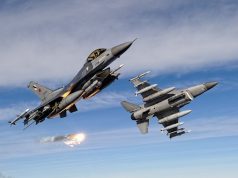US Army Green Berets and US Naval Special Warfare Operators trained with NATO allies and partners as they reached initial operational capabilities for the NATO Response Force during Black Swan 21.
Black Swan 21 helped Austria, Croatia, Hungary, Slovakia, and Slovenia qualify for the initial air, land, maritime operational capabilities required for the Regional Special Operations Component Command (R-SOCC), a Hungarian-led, temporary deployable command element for special forces.
The command will boost the ability of each nation to effectively employ their special operations forces and will enable each nation to contribute separately, while benefiting from an integrated R-SOCC structure when activated for deployment.
“It’s important to see how NATO members can work seamlessly together, can support each other, and act well together to be a really credible deterrent to any adversaries that face us,” said Brigadier General Rob Stephenson, Acting Commander of NATO Special Operations Headquarters.
The R-SOCC is expected to be fully functional by December 2024 and will act as the NATO Response Force in 2025.
R-SOCC is one of NATO’s multinational high visibility projects and was launched by the defense ministers of the five nations through a letter of intent in February 2019. This was followed by a memorandum of understanding signed by Croatia, Hungary, Slovakia, Slovenia in October 2019, and by Austria in December 2020.
Taking place between May 3 and 14, Black Swan 21 is an annual Hungarian-led multinational special operations forces exercise, which demonstrates peer-to-peer deterrence and resiliency of alliances and partnerships in Europe. SOF from Austria, Croatia, Hungary, Slovakia, Slovenia, and the United States participated this year.
“I think this is the manifestation of everything that is great about NATO, several NATO allies coming together and even non-NATO partners coming together to share their tactics, techniques, procedures, and lessons learned so that we’re all better,” said U.S. Air Force Maj. Gen. David H. Tabor, the commanding general of U.S. Special Operations Command Europe.
In Szolnok, Hungary, the Green Berets trained alongside Austrian, Croatian, Hungarian, Slovakian, and Slovenian SOF on aerial vehicle interdiction, Close Quarters Battle (CQB), Fast Rope Insertion Extraction System (FRIES), and special reconnaissance.
“It’s been great training together with a variety of countries,” said a U.S. Army Green Beret team leader. “Every day we’ve gotten stronger and more fluid, and we’re confident to accomplish missions either side by side or as individual units.”
In Budapest, Hungarian SOF trained with Naval Special Warfare operators on Special Operations Craft Riverines (SOC-R) on Europe’s second longest river, the Danube. Meanwhile, Croatia hosted maritime training with Hungary and the U.S. in the Adriatic Sea.



























